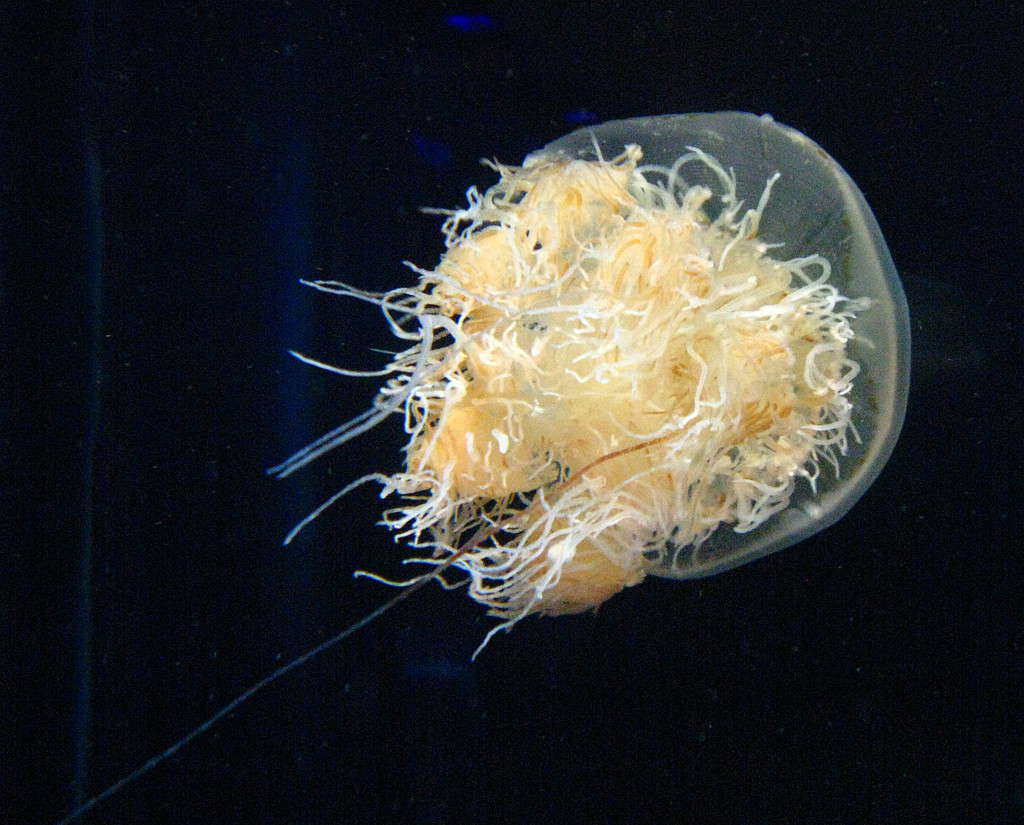Recently, Jellyfish Lake has been growing in popularity. Many people across various social media platforms have been talking about it. It might have left you with questions about what makes the lake so unique, what it is, and if it’s possible to swim in.
The truth is that it’s a rather unique and interesting lake, and definitely worth a visit. If you want to learn more than that about this must-see destination, keep reading.
Where Is Jellyfish Lake?
Jellyfish Lake is located in Palau. Palau is an archipelago made up of over 500 tropical islands. These islands are a country located in Oceania in the western part of the Pacific. It’s often overlooked for more popular destinations like Fiji, Bora Bora, and Cook Islands.
Jellyfish Lake is specifically located on Eil Malk Island, part of the Rock Islands. It’s located a little south of the main island of Palau and is 45 minutes from Koror. It is one of the many lakes on the island. The lake is 1312 feet (400 meters) long and 98 feet (30 meters) deep.
The History of Jellyfish Lake
Jellyfish Lake was created about 12,000 years ago. Back when water covered the islands, animals of all kinds swam around what would later become a lake. However, when the glaciers receded, the island formed and the lake was closed off from the ocean. The animals left in the lake started to adapt and even became their own species over time.
Why Is it Called Jellyfish Lake?

The water is full of millions of jellyfish in Jellyfish Lake, which is why swimming with these animals is a once-in-a-lifetime experience.
©Ethan Daniels/Shutterstock.com
The lake is known as Jellyfish Lake because of all the jellyfish in it. The lake is home to millions of jellyfish, made of up two species.
The first species is the golden jellyfish. To be specific, it’s actually a subspecies of golden jellyfish known as Mastigias papua etpisoni. Their range is limited only to Jellyfish Lake, as the lake is isolated. This means that there is no way for them to expand their range or leave the lake.
They are related closely to another species known as the spotted jellyfish that is also found in the area. However, over time, the golden jellyfish adapted to lose their spots and most of their appendages.
These golden jellyfish are interesting. They feed off of the algae in the lake that attach themselves to the jellyfish. To keep the algae thriving, these jellyfish move from one side of the lake to the other twice a day, a form of migration. At night, they move up and down in the water.
The movements are consistent and easy to track. They move counterclockwise across the entire basin, following the sunlight. Based on research, these movements allow them to get maximum and even coverage of sunlight throughout the day to feed the algae. At night, the trips down into the deeper water are done to procure nitrogen and other nutrients that the algae need to thrive.
The other species, moon jellyfish, are less abundant than the golden jellyfish, and they wander more freely around the water. They also feed off of algae in the water, though not as efficiently as the golden jellyfish.
Is the Lake Dangerous?
Technically, the lake is dangerous. However, it isn’t because of the jellyfish. It’s because, about 49 feet (15 meters) below the water’s surface, there’s a layer of highly concentrated hydrogen sulfide. Even in full scuba gear, hydrogen sulfide seeps into the skin and leads to death.
For the first 42 feet, the water is relatively clear and safe to swim in. Between 42 feet and 49 feet, there is a layer of water that is bright pink. This is the bacterial layer. After that, from 49 feet to 98 feet, there is no oxygen and no light. The water is full of dissolved hydrogen sulfide, which is incredibly deadly.
Above that, the water is perfectly safe. Though it is teeming with millions of jellyfish, they won’t hurt you. Though most jellyfish have stingers that can cause anything from minor irritation to death, the ones in Jellyfish Lake do not sting and therefore cannot hurt you.
Thankfully, the lake is rather closed in. The water levels are steady and there’s nothing in or around the water that would stir up the layers. This means that the layers sit on top of each other and don’t ever mix.
Why Don’t the Jellyfish Sting You?

Jellyfish stings can be pretty dangerous, so it isn’t recommended that you go swimming with jellyfish anywhere outside of Jellyfish Lake.
©I, KENPEI, CC BY-SA 3.0, via Wikimedia Commons – Original / License
Jellyfish stingers are automatic. If you touch a jellyfish, it will sting you. They aren’t able to control this. So no matter how close or comfortable you feel around jellyfish, you must never forget the danger they pose.
However, when it comes to the fish in Jellyfish Lake, the jellyfish won’t sting you. Why? Because they don’t possess stingers. The jellyfish in this lake have adapted. Over the thousands of years they’ve been in the lake, they’ve experienced no predators, and have changed the kinds of prey they eat.
Because they don’t have to worry about being eaten or trying to catch fast fish, they no longer need the stingers. Now, these jellyfish have lost any way to hurt you while you’re swimming with them.
Before their populations dwindled, there was a natural predator in the lake, an anemone known as Entacmaea medusivora. However, these anemones are stationary. What’s more, they prefer to sit on the edge of lakes in shady areas.
Because of the symbiotic relationship with the algae, the jellyfish never entered those shadowy regions. This meant that they rarely, if ever, encountered the one predator in the lake.
Can You Swim with the Jellyfish?
Before 2019, it wasn’t possible to swim with the jellyfish in Jellyfish Lake. That’s because the population was dropping at an alarming rate. In 2005, there were around 30 million jellyfish. However, by 2016, there were barely any left.
Thankfully, the number of jellyfish has increased. In 2019, it was decided that it was safe enough that swimming with jellyfish was reopened. However, sunscreen is banned from the lake, as the chemicals can alter the nutrient levels in the lake and harm the environment. Reef-safe sunscreen is allowed as long as it’s put on at least 30 minutes before getting into the water. If you want to be safe and avoid burning, consider using a swimming shirt instead.
As of 2023, the population of jellyfish in the lake is around 5 million. While the population isn’t anywhere near the 30 million that were originally there, the numbers are increasing steadily enough that scientists are expecting the population to keep growing. Now, anyone can swim or snorkel with the jellyfish.
Can You Scuba Dive in Jellyfish Lake?
Scuba diving in the lake isn’t allowed. There are three reasons for this. The first is that the bubbles that scuba tanks form may collect under the bell of a jellyfish. If this happens, it’s incredibly dangerous for the jellyfish and can lead to permanent damage or even death.
The second reason is that because of the hydrogen sulfide layer. Inexperienced divers may go deeper than safe, and end up dying. Divers also have the potential to mix up the layers if they get too close, which could lead to dangers for swimmers, algae, and jellyfish. To keep everyone safe, it’s best to just prevent diving as a whole.
The photo featured at the top of this post is © iStock.com/Norimoto
Thank you for reading! Have some feedback for us? Contact the AZ Animals editorial team.







